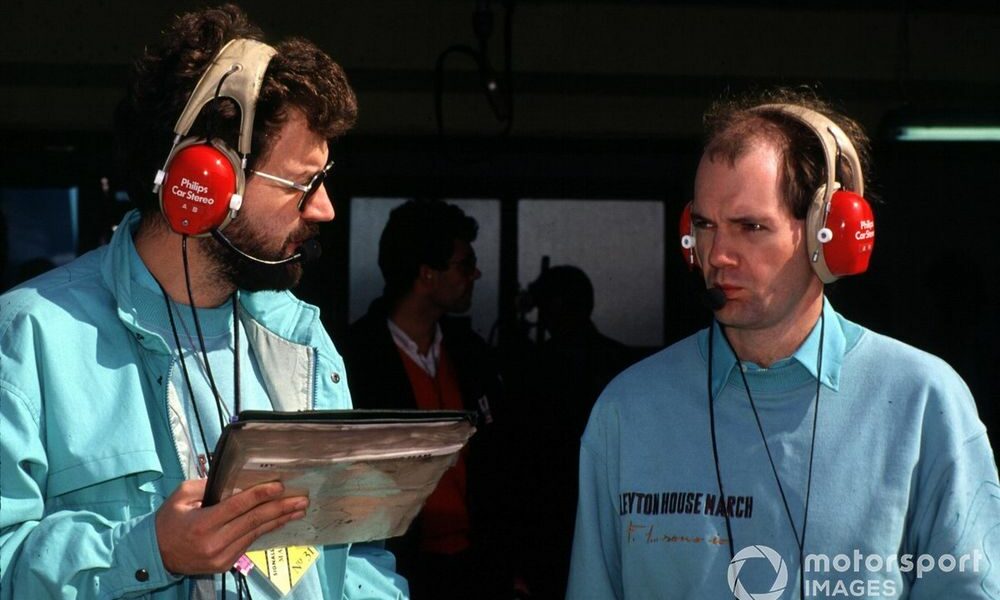He will now focus on the final developments for Red Bull’s first hypercar – the RB17 – which is set to be revealed at Goodwood in July.
Who is Adrian Newey?
Newey was born in Stratford-upon-Avon on 26 December 1958 and attended school alongside former Top Gear presenter Jeremy Clarkson. He then attended the University of Southampton, where he graduated in 1980 with a first-class honours degree in aeronautics and astronautics.
He started his career in motorsport straight after graduating when he was hired by the Fittipaldi F1 team. A year later he joined the team at March, where he worked as a race engineer for Johnny Cecotto in European F2.
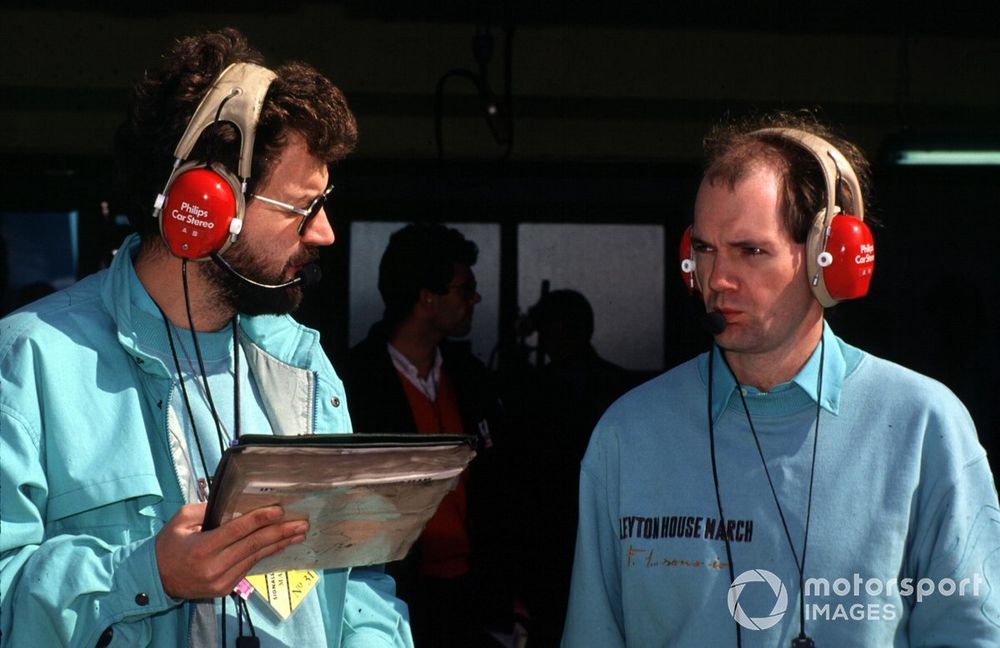
Adrian Newey, Leyton House March designer
Photo by: LAT Photographic
Newey’s first car design project was the March sportscar that won the IMSA GTP title for two consecutive years. He then moved to the constructor’s Indycar project in 1984, where he helped with the car design, alongside working as race engineer for Bobby Rahal at Truesports.
For 1985, Newey designed the March 85C, which won several rounds of the CART World Series for Indycars and carried Al Unser Sr to the title, and Danny Sullivan to victory at the Indianapolis 500. He then decided to move to Kraco Racing in 1986 to work as an engineer on Michael Andretti’s car. The March 86C, which he designed, carried Rahal to the CART and Indy 500 titles.
Newey was set to return to F1 at the end of 1986 when he was employed by the Haas Lola F1 team, but the squad withdrew at the end of the season. He then returned to the CART championship at the beginning of 1987, joining Newman-Haas Racing to work as Mario Andretti’s race engineer.
How long has Adrian Newey worked in Formula 1?
Adrian Newey has had a career in Formula 1 spanning over four decades. After starting out with Fittipaldi Automotive in 1980, he eventually returned to F1 in 1988 when he was rehired by March as chief designer.
Newey worked alongside technical chief Patrick Head at Williams between 1991 and 1996. The FW14 of 1991, designed by Newey, proved a match for the previously dominant McLaren, with Nigel Mansell taking it to second in the championship, 24 points behind McLaren’s Ayrton Senna.
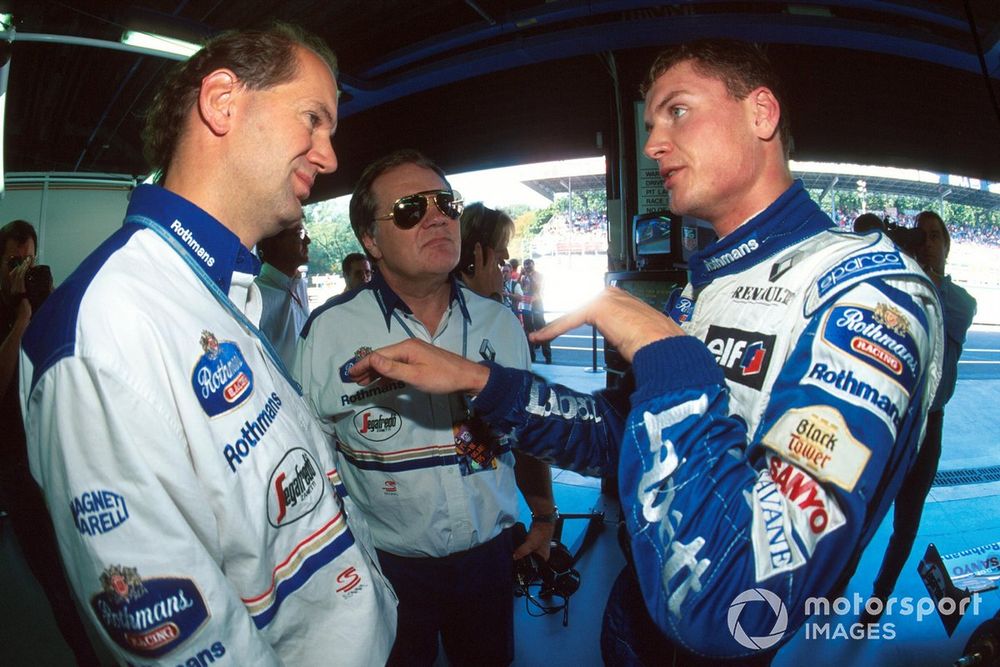
Adrian Newey, Patrick Head and David Coulthard, Williams
Photo by: Sutton Images
In 1992, Williams and Mansell dominated the constructors’ and drivers’ championships, with Alain Prost claiming a clear victory the following year with the FW15C. Williams’s performance took a dip in 1994 when the car struggled against Benetton’s B194, designed by Rory Byrne.
The team faced devastation in 1994 when Senna, who had joined Williams at the start of the year, crashed fatally in the San Marino Grand Prix. Several members of the Williams team, including Newey, were charged with manslaughter. He was acquitted in 1997, an outcome which was upheld following an appeal in 1999. Newey was given full acquittal in 2005 after the Italian Supreme Court had reopened the case two years earlier.
Newey’s relationship with the team’s management began to disintegrate at the end of 1994, and the following year he was unable to progress to become technical director. After defeat at the hands of Schumacher and Benetton in the 1995 championships, Williams and Hill claimed a constructors’/drivers’ double in 1996, but Newey had already been placed on gardening leave.
During his six seasons with Williams, Newey’s cars won 59 races and took 78 pole positions, as well as four drivers’ and constructors’ titles.
When did Adrian Newey join McLaren?
There was another double success for Hakkinen and McLaren in 1999 with the MP4/14, but the MP4/15 was narrowly beaten to both titles in 2000 by Schumacher and the Ferrari F1-2000 designed by Byrne. Newey looked set to leave the team in 2001 when he signed a contract with the Jaguar F1 squad. This was headed by his former CART colleague Rahal, but McLaren boss Ron Dennis convinced Newey to remain with his team.
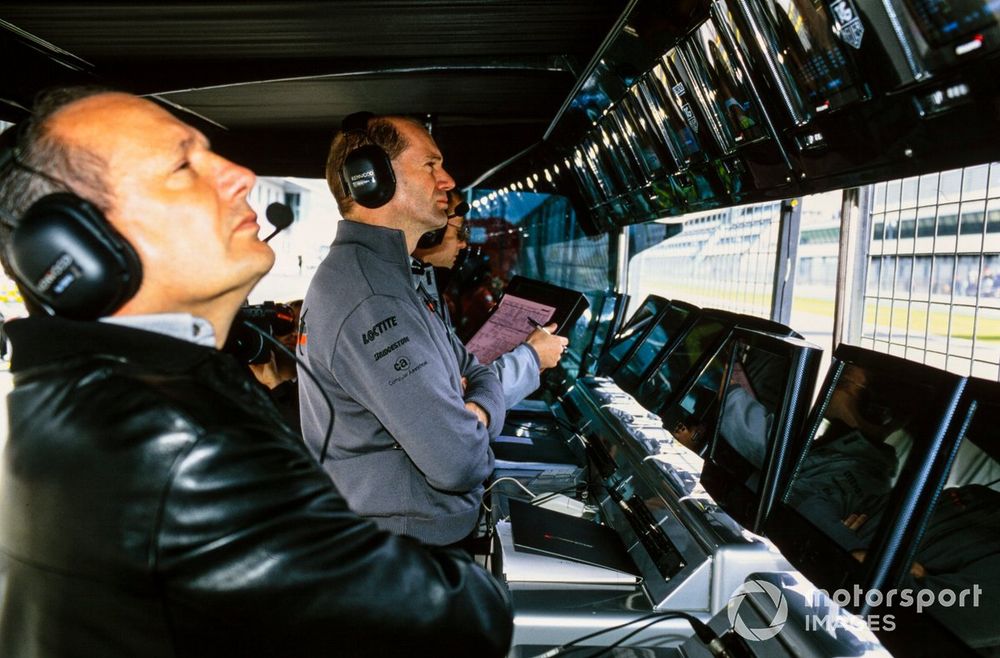
Adrian Newey and Ron Dennis on the McLaren pit wall.
Photo by: Motorsport Images
Rumours accelerated around Newey’s desire to leave the team in 2004 but were continuously denied by Dennis. In April 2005, Newey signed an extended contract to the end of the season before announcing that he would remain with the team for 2006.
When did Adrian Newey join Red Bull Racing?
Despite stating his commitment to McLaren for the 2006 season, it was announced in November 2005 that Newey would join Red Bull Racing from February, for the team’s second season. Due to his late start with the team, he had minimal influence on the 2006 design, and the team started with disappointing results.
The team scored just one podium in 2008, with Coulthard taking third place in the Canadian Grand Prix. Webber scored points in five consecutive races in the first half of the season, but the team scored just five points in the last half of the year.
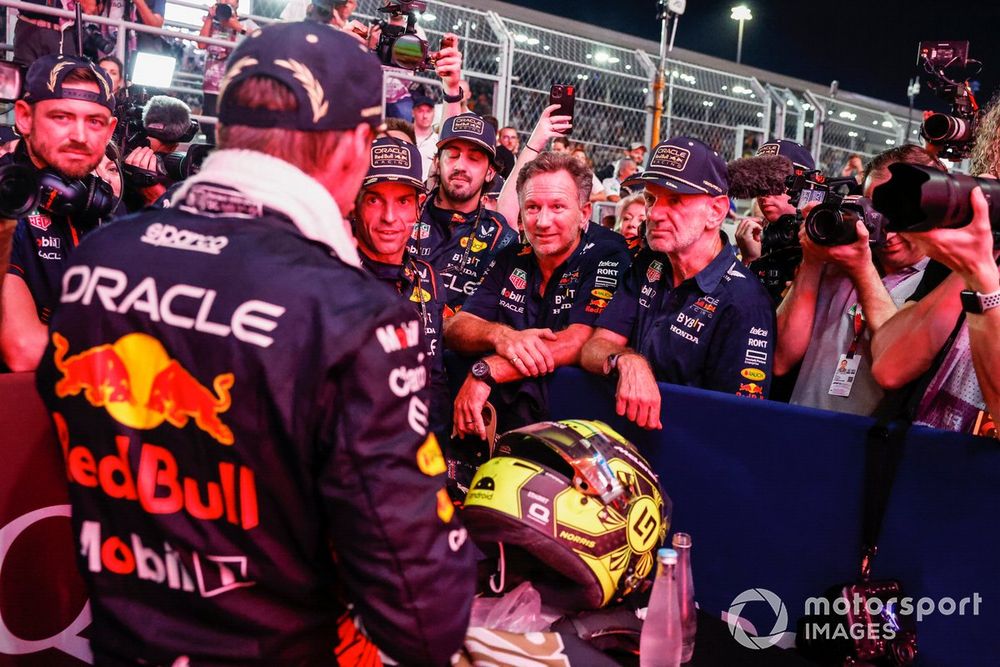
Max Verstappen, Red Bull Racing, 2nd position and 2023 world drivers champion, in Parc Ferme with Christian Horner, Team Principal, Red Bull Racing, Adrian Newey, Chief Technology Officer, Red Bull Racing, his team after the Sprint race
Photo by: Steven Tee / Motorsport Images
The RB6 proved to be a bigger leap for Red Bull, winning nine races and 20 podiums. The team took its first constructors’ championship, and Vettel the first of four consecutive drivers’ crowns.
The following year, the RB7 proved to be the most dominant car on the grid, with Vettel winning 11 out of 19 races in 2011 and Webber taking one further victory. Vettel and Red Bull again won the drivers’ and constructors’ championships.
Newey said: “Regulation restrictions like the lost exhaust are a bit frustrating in truth, because they are exactly that, they are restrictions, they’re not giving new opportunities or revenues particularly, they’re just closing a door.” But adjustments produced aerodynamic gains that resulted in another Vettel/Red Bull title double.
After a difficult start in 2013, a mid-season change in tyre spec resulted in the RB9 becoming the most successful car on the grid. Red Bull secured yet another constructors’ title and Vettel won his fourth and final drivers’ championship.
After a close battle with Ferrari during the first half of the year, the RB18 was able to pull ahead and prove its dominance. The team took the drivers’ and the constructors’ championships, the first time the team had won both titles since 2013.
How many world championships has Adrian Newey won?
Here are all the titles won by Newey-designed cars:
|
Constructors’ Champion |
Drivers’ Champion |
||
|
Williams |
Nigel Mansell |
||
|
Williams |
Alain Prost |
||
|
Williams |
|||
|
Williams |
Damon Hill |
||
|
Williams |
Jacques Villeneuve |
||
|
Mika Hakkinen |
|||
|
Mika Hakkinen |
|||
|
Red Bull Racing |
Sebastian Vettel |
||
|
Red Bull Racing |
Sebastian Vettel |
||
|
Red Bull Racing |
Sebastian Vettel |
||
|
Red Bull Racing |
Sebastian Vettel |
||
|
Max Verstappen |
|||
|
Red Bull Racing |
Max Verstappen |
||
|
Red Bull Racing |
Max Verstappen |

